Colombia
We had planned on spending a short time in Colombia. People say that you can drive from Cartagena to Ecuador in a day or two as it is only about 700 miles. Our initial plan was to drive straight to Ecuador – but that was before we all fell in love with Colombia. The food was some of the best we have ever had. The people were without a doubt the nicest we had ever met traveling. The scenery was unbelievable (and we are from Alaska!).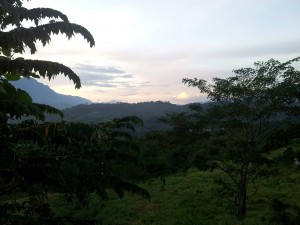
We left the coastal lands (the hot lands) and entered the highlands where most people live. The temperature was better for us. We stuck to the Pan American Highway and disconnected the camper when we wanted to drive to villages off the Highway.
Driving in Colombia Pulling a 29 ft Trailer
When we first began researching this trip, we could find very little information on the roads in South America. The descriptions we did find were usually vague (fine or rough or slow). We figured (correctly so far) that if a truck could drive the Pan American, then so could we.
First, it was always our plan to stick to the Pan American Highway. All adventures off the
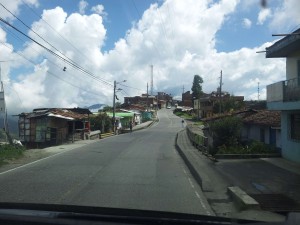
highway involve parking and either disconnecting the van and driving, walking or taking a bus / taxi. The first rule of driving a big rig is Don’t Leave the Highway unless you know for sure you can get where you are going. We are lucky that our rig is short (many are not) so we fit under archways and such. The Pan American wends through several big cities in Colombia and driving gets tense but it is all part of the adventure.
Here are some things to note about the Pan American in Colombia:
- Parquaederos are everywhere, all along the highway. There is always a place to park over night. Some are industrial like parking lots (we only stayed in one of those near Popayon), some are gas stations (some are crowded and loud, some are close to the road but many are spacious and quiet), some are restaurants and some are in hotel parking lots where you can pay the price of a room ($12 USD seemed to be the most expensive) and use the pool, the showers, the wifi and the room. The cost ranged from free to $7000 pesos ($4 USD).
- There are often no signs especially when you need them most. Sometimes there is a sign that says something is about to happen (like turn left up ahead) but then when you get to the point it is a roundabout with three left turns off of it – none are marked.
- GPS barely works when you need it. Often we were driving in a white space.
- Roundabouts are in every city and manage all traffic flow.
- Traffic lights turn yellow before they turn green as well as before they turn red (green – yellow – red – yellow – green)
- The Pan American is a toll highway. We paid about $7000 pesos per toll (same as a car). We paid $82,000 in tolls (about $42 USD).
- People stretch ropes across the road and you have to stop. A few coins and you are on your way – a kind of unofficial toll.
- There is a strong police / military presence but they never stopped us once and were always kind and helpful
- We passed many gas stations in southern Colombia that were sold out of gas (not diesel)
- Many gas stations do not take credit cards.
- Most small towns do not have an ATM. ATMs are often out of cash.
- There are sections of the highway that are literally a steep uphill /downhill for thousands of feet.
- Vehicles pass three and four at a time so there are sections of the highway that may look like a four lane, one way highway but it is just trucks and cars passing a truck. At the same time. Early on, we got confused coming out of Cartagena because the road divided (one side went into a town) and the other turned into a major passing section. It looked entirely like a divided highway section.
- There are few places to pull over when you most want to pull over (scenic overlooks, steep uphills)
- We nearly overheated a few times driving. Make sure you have plenty of water.
- We filled up with water at almost every gas station. The water is clear and smells like chlorine but we only used it for showering, dishes, laundry — and overheating.
- People fill the pot holes in and remove rocks from the road and expect you to pay them. We handed out coins and it was never too little.
- There are military police check points all over the place but they always gave us the thumbs up (meaning we could drive on). We did see buses stopped and searched and we met some people who worked with the police at a restaurant – they wanted to see pictures of snow.
- Expect to be the center of attention every place you stop. We were sometimes swarmed with people and it feels a bit scary at first but every single time it was a fabulous experience.
We divided our trip through Colombia into five sections:
- Cartagena
- Cartagena – Medellin
- Medellin – Popayon
- Popayon – Pasto
- Pasto – Border of Ecuador
Cartagena – Medellin
The roads out of Cartagena are smooth and paved. We passed through one police check point, they looked at Mark’s passport and asked us questions about Alaska. The inland country is very hot and humid. The first night, we actually felt like we couldn’t breathe (but we are Alaskans). The road is two lanes and there are not a lot of cars – but there are many trucks and even more motorcycles. There are no passing lanes and few places to pull over. Once you start the climb into the mountains, things move pretty slow. Trucks average about 35mph and there is really no passing because there is just another truck uphead. Better to just relax and enjoy the slow and beautiful drive. We could have made the trip to Medellin comfortably in three days but we weren’t in a hurry.
Camping spots:
- A field in Arjona on the left side of the Pan American.
- Parquedearo with a big field and a restaurant and a little store
- Santa Rosa de Osos parquedearo, a five minute walk into the lovely town and the parquedearo is behind a 24 Hour Travel Stop which had a cheese maker, a bakery, a small store and restaurant with excellent and inexpensive food.
Medellin – Popayon
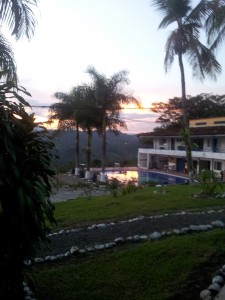 We spent wonderful and relaxing days in the beautiful town of La Pinatada.We saw a parquedearo with a hotel and a pool and it turned out to be one listed in Americas Overland but the name had changed to Mirador del Rocio. We were not really looking for a place to camp but this looked so wonderful that we had to stay. It was $20,000 pesos a night ($11 USD) and that included the pool, the bathrooms and showers and a nice lobby patio with hammocks and ping pong and a pool table. The hotel overlooks the coffee fincas.
We spent wonderful and relaxing days in the beautiful town of La Pinatada.We saw a parquedearo with a hotel and a pool and it turned out to be one listed in Americas Overland but the name had changed to Mirador del Rocio. We were not really looking for a place to camp but this looked so wonderful that we had to stay. It was $20,000 pesos a night ($11 USD) and that included the pool, the bathrooms and showers and a nice lobby patio with hammocks and ping pong and a pool table. The hotel overlooks the coffee fincas.
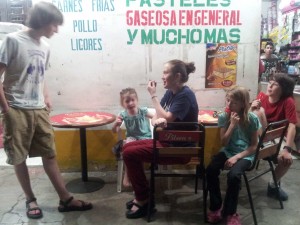
In the evening, we disconnected the van and drove into town and walked around. We bought popsicles and some supplies (potatoes, avocados, oranges for juice) and were headed back to the van. Women were gathered around the van peering inside – it was Sylvia’s car seat that they were looking at. The car seat led to a lengthy discussion which involved Sylvie buckling herself in as a demonstration. Car seats are completely unheard of in Colombia. We told them they were the law in the USA and there was much conversation about this. Our van is also quite the conversation starter, even without the Alaska plates. Kids always ask us why we have a bus as even minivans do not exist in Colombia.
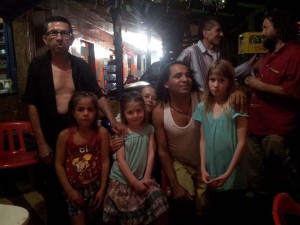
In La Pintada, we met some wonderful and friendly people who brought us all to their restaurant and gave us all bottles of juice. The juice was Colombian and they were wanting to share things from Colombia with us. It is hard for us to understand Colombian Spanish as there is a strong accent so we talked haltingly for a long time and had a very nice evening. We left with a great CD (the folks we met were in a band) and promises to meet up when we left La Pintada so they could see the camper. We did this – which is no easy task but we had great luck and a truck was delivering produce when we pulled up and it promptly left so we had plenty of space to park.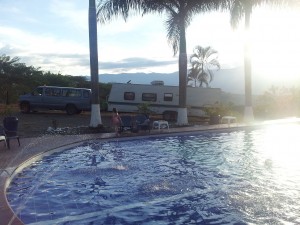
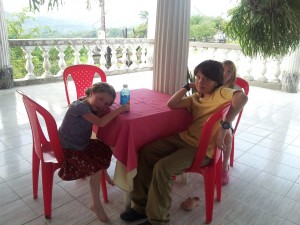
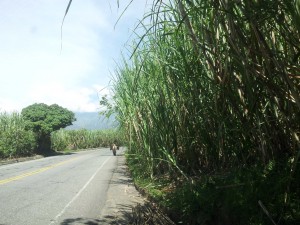
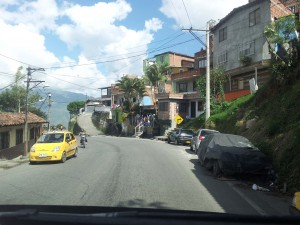
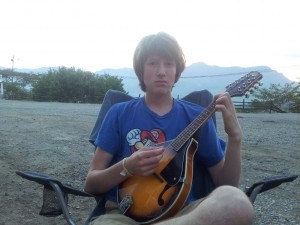
We drove through Medellin which was beautiful. Medellin is mostly red brick and it is nestled high in the mountains with no sprawl so you sort of meander down a two lane highway from the mountains right into Medellin. Here are some things we learned about Medellin: it has one of the most efficient public transportation systems in the world which includes trams up the steep mountainsides and it has art everywhere and is very beautiful. Medellin has a law that says that all public buildings must have art so there are statues and gardens and fountains and mosaics everywhere and many light up at night. Along the river which runs through the city is a park completely lit up the entire length at night with colorful decorative lights. All along the trip, people kept asking us if we were from Medellin and once we got there, we knew why. Most people in Medellin are much lighter skinned than coastal people and tourists are so rare everyone assumed we were from Medellin.
We headed into a small town on the advice of a Colombian / Irish gas station attendant and camped at a Esso station next to a hotel. It was quite the exciting moment when we arrived and we soon had a crowd of about 20 people outside hanging around. We were too far from the town to walk and we were pretty tired that night so we stayed around our neighborhood. Our neighborhood turned out to be filled with prostitutes and hotels you could rent by the hour, hotels called things like the Love Karma Sutra and Cupid Love Shack with gigantic nativities set up outside. Apparently this is part of the truck driving industry.
We camped in Popayon in a parquedearo listed in Americas Overland and disconnected the camper and drove into Popayon. The van and camper were secure but the parquedearo was filthy and smelled really bad. Oil and gas had been spilled or dumped all over it and it was pretty toxic smelling. The section of town was kind of rowdy and from the camper we could here plenty of fights and screaming and even a few gunshots. The security guards at the parquedearo were constantly walking the gate and the evening was not tranquillo. Once it got dark, there was some kind of massive trash fire that filled the entire valley with smoke that made your eyes sting. This lasted all night. We shut all the windows – luckily it was not very hot.
Popayon – Pasto
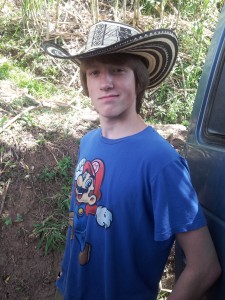
We camped at a very nice Texaco station that was quiet and about a 5 minute walk to town. The Texaco had free showers and water and a stunning view across the valley.
Pasto – Border of Ecuador
Pasto was a very nice city. It reminded us of Vancouver, BC.
In a perfect example of the lack of signs, the Pan American drives right through the center of Pasto and then turns right. The upcoming right turn is marked but when you get to the point of turning right, there are actually two right turns; one heads west and one heads more southwest. We took the wrong one. The GPS completely failed us here. It had us floating about 10 feet off the road anyway.
There was no gasoline and lines were long at the stations that did have gas. Diesel was not a problem. The price of gas drops dramatically here, from over $8000 pesos a gallon (yes, a gallon) to $5600 a gallon.
We camped at a Bio station with a huge empty parquedearo and disconnected the camper and drove into the small towns.
Ipiales is the Colombian border town. Driving through it was confusing and the streets were narrow and crowded. The border was easy, we had our passports stamped and we were on our way to Ecuador. It is funny how a few feet can make such a great difference. The Ecuador side of the border was much dirtier, buildings covered with graffiti and litter all over the place. We had to wait about an hour to get our passports stamped. Someone had thrown up on the floor and it was covered up with pieces of paper. The good part was that it was a little meet up of fellow travelers so we had some fun conversations with a man on a motorcycle from Scotland and another couple on motorcycles from Australia. The Ecuadorian border town is Tulcan and it was more narrow than Ipiales. Lucky we got behind a bus and just followed it out of town.
Ecuador
We were sad at first with Ecuador. It was dirty and covered with graffiti and litter and the people were not so nice. On the other hand, we were not such a freak show and no one seemed to care. It was New Years day and there were drunk people men everywhere, sleeping on the sidewalk and lying in the grass and stumbling around. Everything was closed. We drove up and up and up and up to more than 10,000’ and then down to 2,000’ and then we did it once more. It was kind of stressful. The roads are much better but there are many more drivers and cars in Ecuador due to the fact that gas is $1 USD a gallon. Ecuador uses the USD and we learned where all the $2 bills and Susan B. Anthony coins are – Ecuador. We were headed to Otavalo and Americas Overland said there were two conveniently located parqueaderos near the market but we never know what that means. We hired a taxi for $2 to lead us to one and we arrived at a huge parqueadero right next to the market with bathrooms and a nice level cement pad we got to park on.
Otavalo
Otavalo has one of the biggest (or perhaps the biggest) market of indigenous crafts in South America.
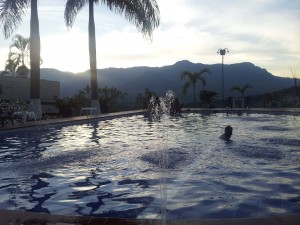
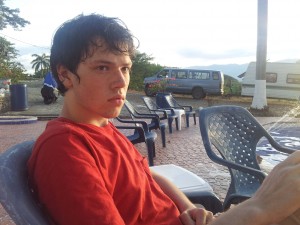
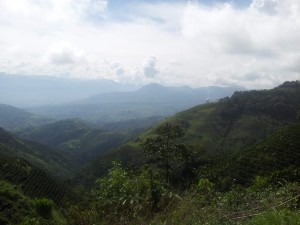
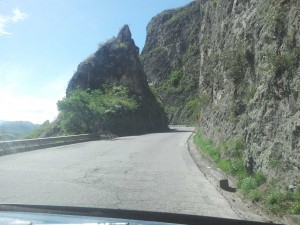
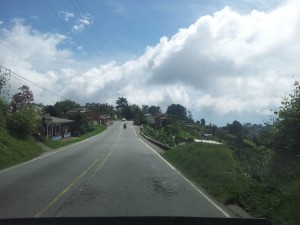
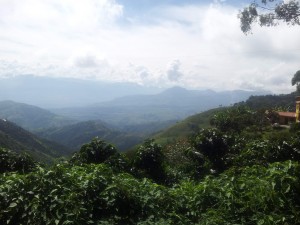
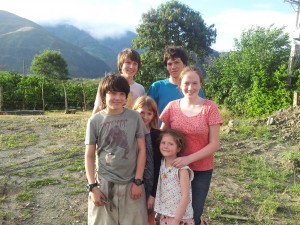
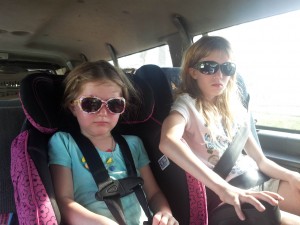
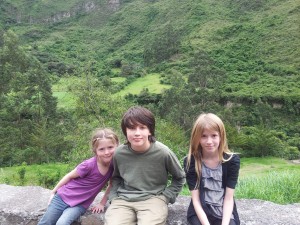
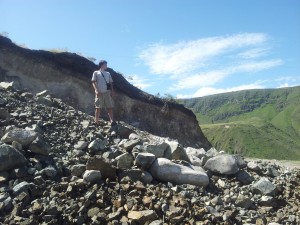
Great post. Very informative. We have been knocking around the idea of a motorcycle trip similar to your tour (but, unfortunately, of less duration). Would love any tid bits you might come across about motorcycle safety, how travelers keep their bikes from getting stolen, how motorcycles are received by the locals and police/military etc.
Very sorry to hear of the loss of your dog. Kalina and I both feel your loss and send our condolences.
John and Kalina
Very pleased to see that you had few “mishaps” while traveling through difficult mountain terrain. I guess you’re now heading to coastal Ecuador – to “immerse” yourselves in Spanish. And I pray that the locals will continue to wish you well for the remainder of your trip
We can relate to the grief you had over losing your dog. About a year ago, many tears were shed when we lost a very affectionate cat after 15 years – due to sickness that eventually comes with aging. However, two weeks later, we bought three month-old kittens from the same litter, had they spayed, neutered and tagged with microchips. They’re now fully grown, romp all over the house, are just as affectionate – and have more than offset the loss that we had a year ago. Perhaps, when you return home, you may find similar satisfaction by having another dog to replace the one you loss. God Bless.
DeCorso’s Family, Very Sorry loss Louis, My heart sad. I hug Ryan. I paryed about it I bet My mom care Louis in heavens. I telling forgot Merry Christmas and Happy New years, Please Care on travels.
DANNY